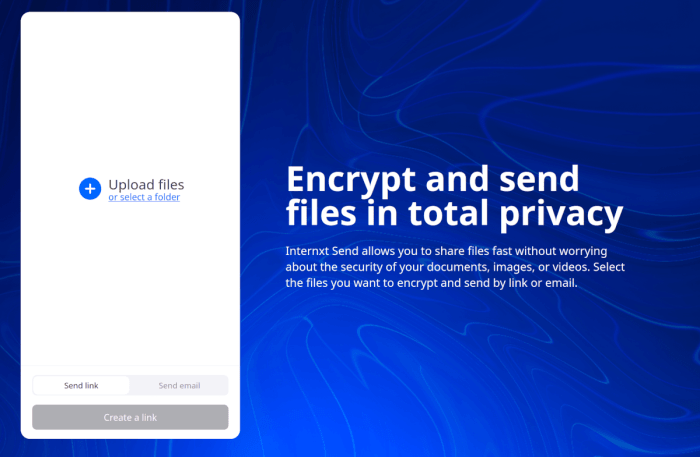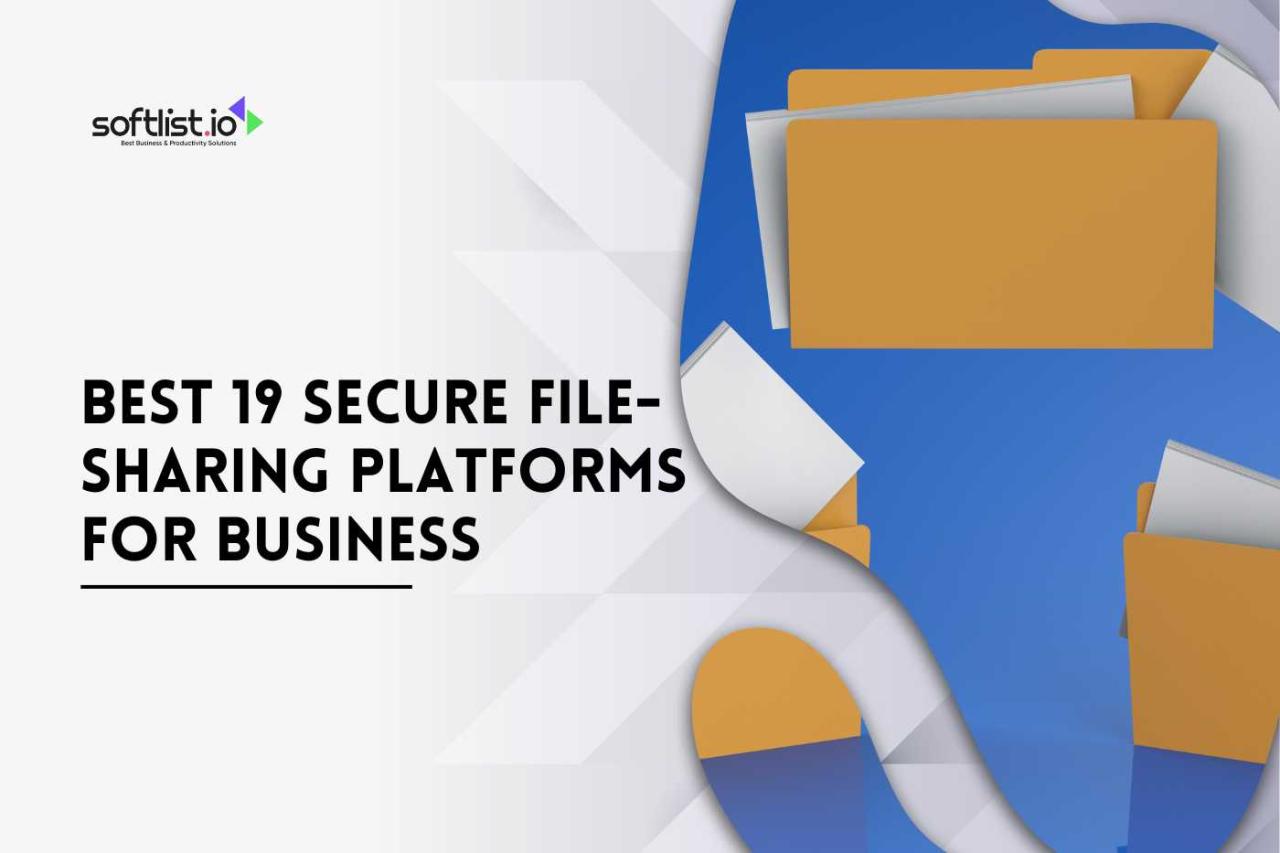When it comes to sharing large files securely across the globe, the right platforms can make all the difference. From robust encryption methods to seamless collaboration tools, these international platforms offer a myriad of features for individuals and businesses alike.
Let's dive into the world of secure file sharing and explore the best options available.
Overview of Best International Platforms for Secure File Sharing

When it comes to sharing files securely, there are several top international platforms that are known for their reliability and security features. These platforms play a crucial role in enabling individuals and businesses to exchange sensitive information without the risk of unauthorized access or data breaches.
List of Top International Platforms for Secure File Sharing
- Dropbox
- Google Drive
- OneDrive
- WeTransfer
- Box
Importance of Secure File Sharing
Secure file sharing is essential for maintaining the confidentiality and integrity of data. It ensures that sensitive information remains protected from cyber threats and unauthorized access, safeguarding both personal and business interests.
Key Features to Look for in a Platform for Secure File Sharing
- End-to-end encryption to secure data in transit and at rest
- Access controls and permission settings to manage who can view, edit, or download files
- Activity logs and audit trails for tracking file activities and user interactions
- Integration with security tools such as antivirus scanners and data loss prevention systems
- Secure file sharing protocols such as SFTP, HTTPS, and password-protected links
Security Measures on International File Sharing Platforms
When it comes to sharing large files securely on international platforms, one of the key factors to consider is the security measures implemented by these platforms. Let's delve into the encryption methods used, data privacy protection during file transfer, and compare the security measures across different platforms.
Encryption Methods
Encryption plays a crucial role in securing files shared on international platforms. Here are some common encryption methods used:
- End-to-end encryption: This method ensures that only the sender and the recipient can access the shared files by encrypting the data in transit.
- SSL/TLS encryption: Secure Socket Layer (SSL) and Transport Layer Security (TLS) protocols are commonly used to encrypt data during transmission, adding an extra layer of security.
- 256-bit AES encryption: Advanced Encryption Standard (AES) with a 256-bit key length is considered highly secure and is widely used to protect files from unauthorized access.
Data Privacy Protection
Protecting data privacy during file transfer is essential to prevent unauthorized access or leaks of sensitive information. International platforms ensure data privacy through:
- Strict access controls: Implementing role-based access controls to restrict who can view, download, or edit shared files.
- Secure data storage: Storing files on encrypted servers with robust security measures to prevent data breaches or cyber attacks.
- Data encryption at rest: Encrypting files stored on servers to maintain confidentiality and integrity even when the data is at rest.
Comparison of Security Measures
When comparing the security measures of different international file sharing platforms, it is important to assess factors such as encryption strength, data protection policies, and compliance with data privacy regulations. Some platforms may offer additional security features like two-factor authentication, secure file previewing, or watermarking to enhance file security.
File Size Limitations and Storage Options
When using international platforms for secure file sharing, it is essential to consider the file size limitations and storage options available to users. This information can help users determine the most suitable platform for their needs and ensure efficient file management.
Maximum File Size
- Google Drive: Google Drive allows users to share files up to 5 TB in size. This generous limit provides users with the flexibility to share large files without worrying about size constraints.
- Dropbox: Dropbox offers a maximum file size limit of 50 GB for uploaded files. While this limit is lower than Google Drive, it still allows users to share sizable files securely.
- OneDrive: Microsoft's OneDrive allows users to share files up to 250 GB in size. This platform is ideal for users who frequently share very large files or need ample storage space.
Storage Options
- Google Drive: Users can take advantage of Google Drive's free 15 GB storage capacity or opt for paid plans to increase storage space. They can organize files into folders, create shared drives for collaboration, and use the search function to locate files quickly.
- Dropbox: Dropbox offers 2 GB of free storage, with the option to upgrade to premium plans for more space. Users can organize files into folders, access version history, and use the Dropbox Paper feature for collaborative work.
- OneDrive: With OneDrive, users get 5 GB of free storage and can upgrade for more space. They can create folders, access files offline, and use the Office 365 integration for seamless productivity.
User Interface and Ease of Use

When it comes to sharing large files securely, the user interface and ease of use of a platform play a crucial role in ensuring a seamless experience for users. Let's evaluate the user interface of some of the best international platforms in terms of simplicity and functionality.
Dropbox
- Dropbox offers a clean and intuitive user interface, making it easy for users to navigate.
- Uploading files is as simple as dragging and dropping them into the designated area.
- Downloading files is straightforward, with options to download individual files or entire folders.
- Sharing files on Dropbox is hassle-free, as users can generate shareable links or invite others to collaborate on specific files.
- New users can benefit from organizing files into folders and using the search function to quickly locate specific files.
Google Drive
- Google Drive's user interface is user-friendly and familiar to those who use other Google products.
- Uploading files to Google Drive can be done by simply clicking the "New" button and selecting the file to upload.
- Downloading files is easy, with options to download files individually or in bulk.
- Sharing files on Google Drive is convenient, as users can set permissions for viewing, editing, or commenting on files.
- New users can utilize the "Quick Access" feature to find recently accessed files or folders quickly.
OneDrive
- OneDrive offers a sleek and uncomplicated user interface, suitable for users of all levels.
- Uploading files to OneDrive is as simple as dragging and dropping files into the web interface.
- Downloading files can be done by selecting the file and choosing the download option.
- Sharing files on OneDrive is seamless, with options to generate shareable links or invite specific individuals to view or edit files.
- New users can take advantage of the "Recent" tab to quickly access recently uploaded or viewed files.
Collaboration Tools and Sharing Permissions
Collaboration tools and sharing permissions are crucial for team projects to ensure smooth workflow and secure file sharing among team members. These features allow users to work together effectively while maintaining control over access to shared files.
Collaboration Features
- Real-time Editing: Many international platforms offer real-time editing capabilities, allowing multiple users to work on the same document simultaneously. This feature enhances collaboration and reduces the need for back-and-forth communication.
- Commenting and Feedback: Users can leave comments and feedback directly on files, providing a platform for discussion and revisions. This promotes effective communication and collaboration within the team.
- Version Control: Collaboration tools often include version control features, enabling users to track changes made to a file and revert to previous versions if needed. This ensures that the team is always working on the latest version of the document.
Sharing Permissions
- View Only: Users with view-only permissions can access and view files but cannot make any changes. This is useful for sharing information without allowing editing rights.
- Comment Only: Users can leave comments and suggestions but cannot edit the actual content of the files. This permission level is ideal for feedback and review purposes.
- Editing: Users with editing permissions can make changes to the files, collaborate in real-time, and save their edits. This level of access is suitable for team members actively working on a project.
Examples of Secure Collaboration
For example, a marketing team can use the real-time editing feature to work on a campaign proposal together, leave comments for feedback, and track changes made by each team member. By assigning different sharing permissions based on roles, they can ensure that only authorized individuals have access to sensitive information while maintaining a collaborative environment.
Cost and Pricing Models
When it comes to choosing the right international file sharing platform, cost and pricing play a crucial role in decision-making. Let's dive into the pricing plans of different platforms, explore free options, and provide tips on selecting the best plan for your needs.
Pricing Plans Comparison
- Platform A: Offers a tiered pricing structure based on storage capacity and additional features. Plans range from free with limited storage to premium plans with unlimited storage and advanced security features.
- Platform B: Follows a subscription-based model with monthly or annual plans. Prices vary depending on the level of storage and collaboration tools included.
- Platform C: Provides a pay-as-you-go option where users only pay for the storage they use. This flexible pricing model is ideal for businesses with fluctuating file sharing needs.
Free Options and Limitations
- Many international file sharing platforms offer free plans with basic features and limited storage space. These free options are great for individuals or small businesses looking to get started without incurring costs.
- However, free plans often come with restrictions such as file size limits, limited sharing permissions, and lack of advanced security features. It's essential to consider these limitations when choosing a free plan.
Choosing the Right Pricing Plan
- Assess your file sharing needs: Determine the volume of files you need to store and share, the level of security required, and the collaboration tools needed for your workflow.
- Consider scalability: Choose a pricing plan that can grow with your business. Look for platforms that offer scalable options to accommodate your increasing file sharing requirements.
- Evaluate additional features: Compare the features offered in each pricing plan, such as encryption, access controls, versioning, and integration with other apps. Make sure the plan aligns with your specific needs.
Concluding Remarks
In conclusion, navigating the realm of secure file sharing can be a game-changer for your personal or professional endeavors. With the right platform at your fingertips, you can share files confidently and efficiently, knowing that your data is safe and secure.
Embrace the power of secure file sharing and unlock new possibilities today.
Detailed FAQs
What is the maximum file size limit on these platforms?
The maximum file size limit varies across different platforms, ranging from 2GB to unlimited storage capacities.
Are there free options available for secure file sharing?
Yes, some platforms offer free plans with limited storage and features, making them ideal for personal use or small projects.
How can users effectively manage their files on these platforms?
Users can organize files into folders, use search functions, and utilize tagging features to streamline file management on these platforms.





